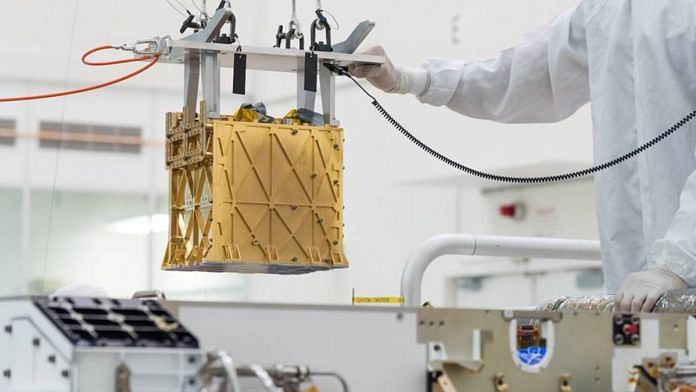Bengaluru: NASA’s Perseverance rover has successfully created oxygen from the thin atmospheric carbon dioxide present on Mars.
The Mars Oxygen In-Situ Resource Utilization Experiment (MOXIE) aboard the rover on Mars carried out the experiment on 20 April, which was a technology demonstration.
The milestone success of the instrument, the size of a toaster, occurred just a day after the mission flew the first powered, controlled helicopter on Mars.
”This is a critical first step at converting carbon dioxide to oxygen on Mars,” Jim Reuter, associate administrator for NASA’s Space Technology Mission Directorate, said in a statement Wednesday.
“MOXIE has more work to do, but the results from this technology demonstration are full of promise as we move toward our goal of one day seeing humans on Mars,” Reuter added.
The experiment paves the way for future, larger-scale oxygen generating experiments on the planet that are expected to herald advances made for human survival on Mars. Oxygen is needed outside of earth not just for respiration and survival, but also for transport by powering rockets.
Also read: 2 Indians are trying to predict how junk ‘flies’ in space, could help ISRO protect satellites
How MOXIE works
MOXIE extracts carbon dioxide from the atmosphere, which makes up about 96 per cent of the wispy air blanket around Mars. It then compresses it and filters the gas to remove contaminants. The gas is then heated and the process separates oxygen atoms from carbon dioxide molecules, releasing carbon monoxide as a byproduct.
This process occurs at extremely high temperatures of approximately 800 degrees Celsius. The gold-coated, insulated instrument ended up producing 5.4 grams of oxygen in one hour, which is approximately the quantity of air needed to keep an astronaut breathing for ten minutes.
MOXIE is capable of producing 10 to 12 grams of oxygen per hour, about as much as a tree, and will do so over a course of one Martian year (or two earth years) in a series of ten experiments divided into phases.
The first phase will characterise the instrument’s function while the second will try the experiments during various ambient atmospheric conditions like times of day and seasons. The third phase will be experimental and will “push the envelope” in trying new operating modes.
(Edited by Rachel John)
Also read: Early universe explosion reveals hidden ‘Goldilocks’ black hole that few believed existed




Wonderful. Kuchh Delhi bhi bhijva dijiye.